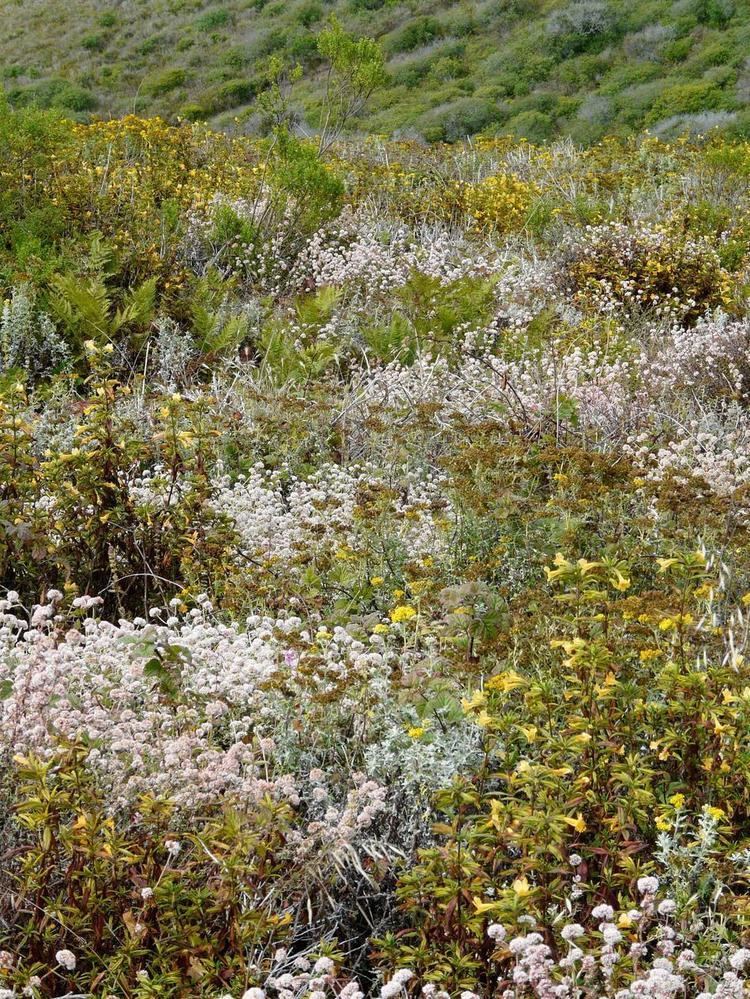 | ||
Coastal sage scrub
Coastal sage scrub, also known as coastal scrub, CSS, or soft chaparral, is a low scrubland plant community of the California coastal sage and chaparral subecoregion, found in coastal California and northwestern coastal Baja California. It is within the California chaparral and woodlands ecoregion, of the Mediterranean forests, woodlands, and scrub biome.
Contents
- Coastal sage scrub
- Coastal sage scrub a fragile habitat
- Characteristics
- Geographical subtypes
- Northern coastal scrub
- Southern coastal scrub
- References
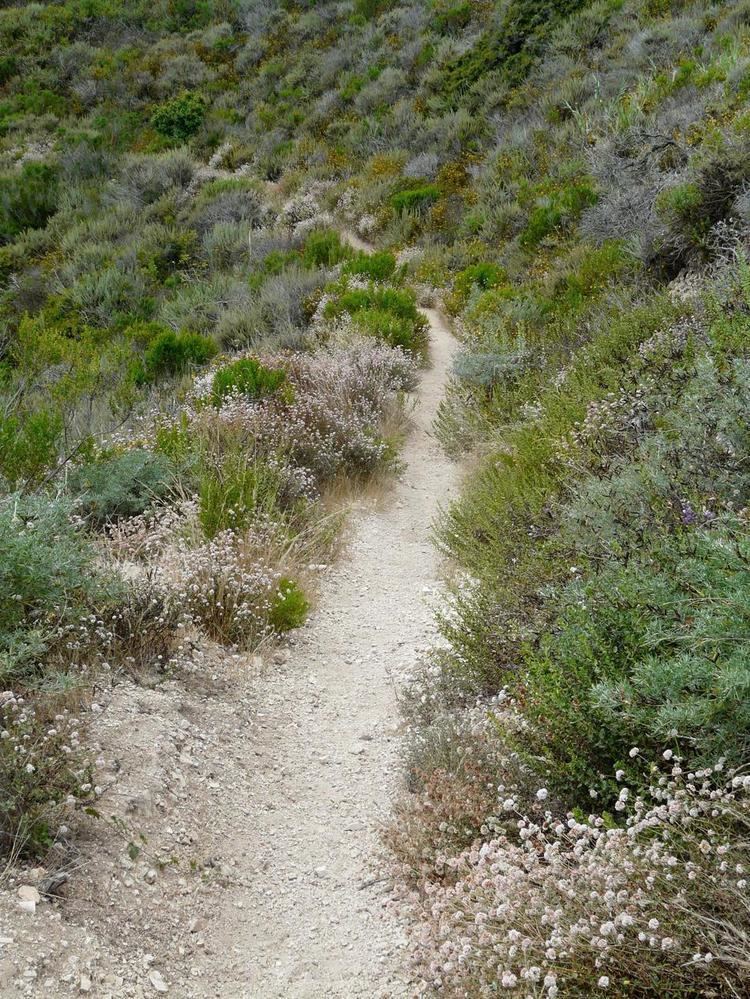
Coastal sage scrub a fragile habitat
Characteristics

Coastal sage scrub is characterized by low-growing aromatic, and drought-deciduous shrubs adapted to the semi-arid Mediterranean climate of the coastal lowlands. The community is sometimes called "soft chaparral" due to the predominance of soft, drought-deciduous leaves in contrast to the hard, waxy-cuticled leaves on sclerophyllous plants of California's chaparral communities.
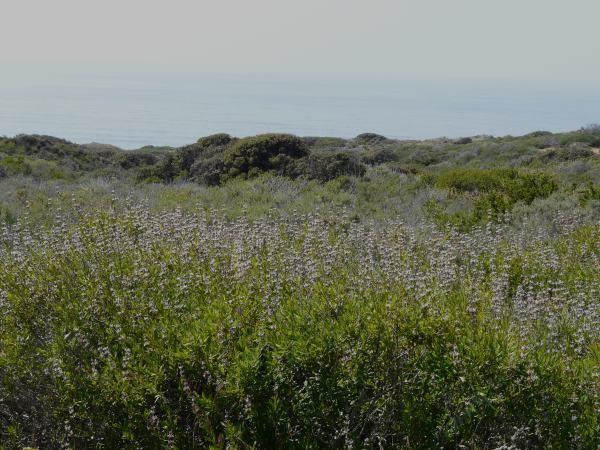
Characteristic shrubs and subshrubs include: California sagebrush (Artemisia californica), black sage (Salvia mellifera), white sage (Salvia apiana), California buckwheat (Eriogonum fasciculatum), coast brittle-bush (Encelia californica), golden yarrow (Eriophyllum confertifolium). Larger shrubs include: toyon (Heteromeles arbutifolia) and lemonade berry (Rhus integrifolia). Herbaceous plants, grasses, and in some locales, cacti and succulents, are also part of the flora.
Geographical subtypes
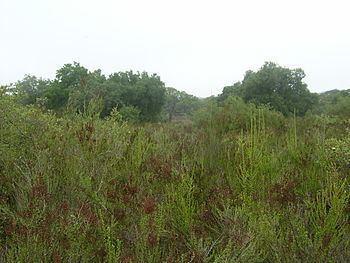
The coastal sage scrub plant community is divided into two geographical subtypes — northern coastal scrub and southern coastal scrub.
Northern coastal scrub
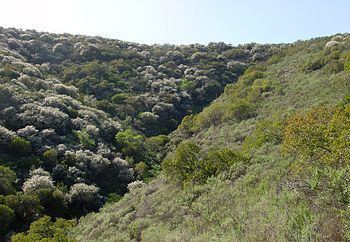
Northern coastal scrub occurs along the Pacific Coast from the northern San Francisco Bay Area northwards to southern Oregon. It frequently forms a landscape mosaic with the California coastal prairie plant community.
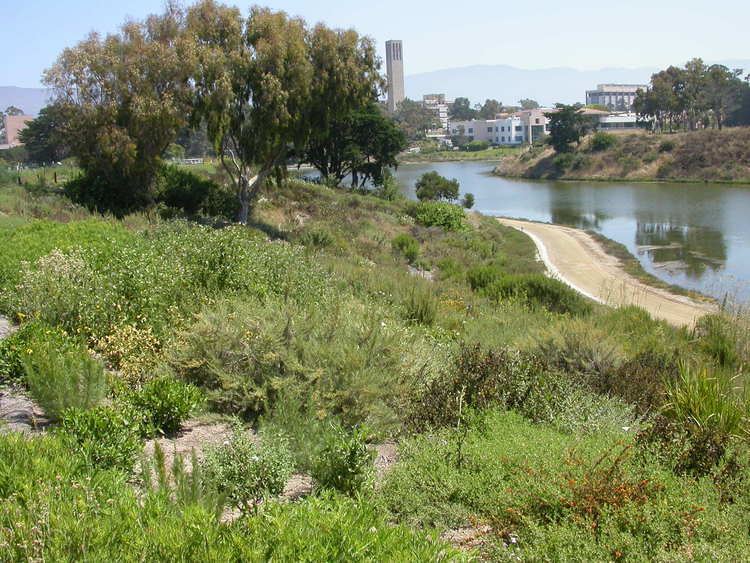
The predominant plants are low evergreen shrubs and herbs. Characteristic shrubs include coyote brush (Baccharis pilularis), yerba santa (Eriodictyon californicum), coast silk-tassel (Garrya elliptica), salal (Gaultheria shallon), and yellow bush lupine (Lupinus arboreus). Herbaceous species include western blue-eyed grass (Sisyrinchium bellum), Douglas iris (Iris douglasiana), and grasses.
Southern coastal scrub
Southern coastal scrub is mostly found along the maritime Central Coast region, and the terraces and mountains with coastal climate influence in Southern California. Its distribution extends from the southwestern San Francisco Bay Area in the north, through Big Sur, Vandenberg Air Force Base, the Oxnard Plain, the Los Angeles Basin, most of Orange County, parts of Riverside County, coastal San Diego County, and the northwestern region of Baja California state in Mexico, including the areas around Tijuana and Ensenada.
The metropolitan areas of Los Angeles, San Diego, and Tijuana are located in the southern coastal scrublands, and most of the scrublands have been lost to urbanization and agriculture. The plants of this community prefer the mild maritime climates found along Southern California's coastline. World Wildlife Fund estimates that only 15 percent of the coastal sage scrublands remain undeveloped. Some of the remaining southern coastal scrub in Los Angeles County can be found in dunes under the takeoff path at Los Angeles International Airport—LAX, in the coastal Santa Monica Mountains National Recreation Area, and at the The Robert J. Bernard Field Station at the Claremont Colleges. In San Diego County, the Camp Pendleton Marine Corps Base protects larger areas, and the Marine Corps Air Station Miramar has vernal pools and the endemic mint Pogogyne abramsii. One of the largest remaining areas of inland coastal sage scrub is found in the Temescal Mountains of Riverside County.
A number of rare and endangered species occur in southern coastal scrub habitats. For example, the California gnatcatcher (Polioptila californica) is a threatened bird species endemic to the coastal sage scrublands. Other endemic fauna includes the El Segundo blue butterfly in the LAX dunes; and the Palos Verdes blue butterfly (Glaucopsyche lygdamus palosverdesensis), at only one site on the Palos Verdes Peninsula.
The endangered Torrey pine (Pinus torreyana) is the dominant tree at Torrey Pines State Reserve in San Diego, one of only two known stands of this pine species.
